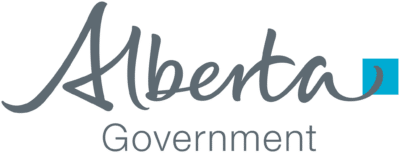In today’s digital age, having a strong online presence is crucial for the success of any business. With millions of websites competing for attention, how can you ensure that your website stands out? The answer lies in search engine optimization (SEO). SEO is the practice of optimizing your website to rank higher in search engine results pages (SERPs). By implementing effective SEO strategies, you can increase your visibility, drive organic traffic, and ultimately grow your business. In this article, we will explore the fundamentals of SEO and provide beginners with actionable tips to get started.
Understanding How Search Engines Work
Before diving into SEO techniques, it’s important to have a basic understanding of how search engines work. Search engines like Google use complex algorithms to crawl and index websites, and then determine their relevance and ranking in search results. Here’s a simplified overview of the process:
Crawling: Search engines send out bots, often called spiders or crawlers, to discover and explore web pages. These bots follow links from one page to another, collecting information about each page they visit.
Indexing: After crawling a page, search engine bots analyze the content and store it in a massive database called an index. This index is used to retrieve relevant results when users perform searches.
Ranking: When a user enters a query into a search engine, it quickly analyzes the index to provide the most relevant and valuable results. The ranking process involves algorithms that consider various factors such as keyword relevance, backlinks, website authority, user experience, and more.
Now that we have a basic understanding of how search engines work, let’s explore some essential SEO techniques to improve your website’s visibility and ranking.

Keywords: The Foundation of SEO
Keywords are the cornerstone of SEO. These are the words and phrases that people type into search engines when looking for information, products, or services. By understanding the keywords relevant to your business and incorporating them strategically into your website’s content, you can improve your chances of ranking higher in search results. Begin by conducting keyword research to identify the terms your target audience is likely to search for. Tools like Google Keyword Planner, Ahrefs, and SEMrush can assist you in this process. Once you have your list of keywords, integrate them naturally into your website’s titles, headings, meta descriptions, and body content.
On-Page Optimization: Enhancing User Experience
On-page optimization focuses on improving the user experience on your website. This involves optimizing various elements such as page load speed, website content, and overall website structure. A fast-loading website enhances user experience but also earns favor with search engines. Be sure to organize your content using clear headings, subheadings, and bullet points to make it easily scannable for both users and search engines. Consider adding multimedia elements such as images, videos, or infographics to engage your audience.
Regularly Update and Refresh Content
Fresh, updated content signals to search engines that your website is active and relevant. Regularly review and update your existing content, ensuring it remains accurate and up to date. Additionally, consider adding new content regularly through blog posts, articles, or other forms of valuable information for your audience.
Website Structure and Navigation
Ensure that your website has a logical and user-friendly structure. Organize your content into well-defined categories and use intuitive navigation menus to make it easy for visitors and search engine bots to find and navigate your site. An organized and easily accessible website improves user experience and search engine crawlability.
Mobile Optimization
With the rise of mobile device usage, optimizing your website for mobile is crucial. Responsive design, fast loading times, and mobile-friendly navigation are essential for delivering a seamless user experience on mobile devices. Google’s mobile-first indexing means that mobile optimization is no longer optional—it’s a necessity.

Off-Page Optimization
Off-page optimization is an important aspect of SEO that focuses on improving your website’s visibility and authority through external factors. Off-page optimization, when combined with strong on-page optimization, creates a holistic SEO strategy that can boost your website’s authority and visibility in search engine results.
Building Quality Backlinks: Establishing Authority
Backlinks are links from other websites that point to your website. They are a crucial aspect of SEO as search engines consider them as votes of confidence and authority. To build backlinks, focus on creating high-quality content that other websites would naturally want to link to. Guest posting on industry-relevant blogs, participating in online communities, and reaching out to influencers or thought leaders in your niche can also help you acquire valuable backlinks.
Optimizing for Local Search: Targeting Your Local Audience
Local SEO involves targeting geographical keywords and optimizing your online presence to appear in local search results. To do this, ensure that your business information, such as name, address, and phone number, is consistent across all social platforms and on your website.
Create a Google Business Profile and optimize it with relevant information and customer reviews. Encourage your satisfied customers to leave reviews, as positive reviews can boost your visibility in local search results.
Monitor and Analyze Competitor Strategies
Keep an eye on your competitors’ SEO strategies to gain insights and identify potential opportunities. Analyze their keyword targeting, content approach, backlink profiles, and social media engagement to refine and improve your own SEO tactics.
Measuring and Adapting: The Continuous SEO Process
SEO is not a one-time task but an ongoing process. It is crucial to measure and analyze your SEO efforts to understand what’s working and what needs improvement. Utilize tools like Google Analytics and Search Console to track your website’s performance, including organic traffic, bounce rates, and conversion rates. Regularly review your keyword rankings and identify opportunities for optimization. Stay updated with the latest SEO trends, algorithm changes, and industry best practices to adapt your strategies accordingly. Remember, SEO is a long-term investment that requires consistent effort and adaptation to achieve sustainable results.
In Summary …
Search engine optimization may seem overwhelming at first, but by understanding the basics and implementing the right strategies, you can gradually improve your website’s visibility and attract more organic traffic. Remember to continuously monitor your website’s performance using tools like Google Analytics and Google Search Console to make adjustments accordingly. Stay up to date with the latest SEO trends and algorithm changes to ensure your strategies remain effective. With dedication and consistent effort, you’ll be on your way to mastering SEO and reaping the benefits of increased online visibility and business growth.
 Erica Pollock
Erica Pollock
Business Owner, EricaRae
LinkedIn | Instagram | Twitter
Erica Pollock is a Canadian freelance writer and digital marketing specialist with a wealth of experience in the communications industry. With her deep passion for marketing strategy, SEO and content creation, Erica has been able to leverage her expertise to help many businesses achieve their digital marketing goals. In her current role as the Senior SEO Writer at Agorapulse, Erica uses her knowledge of both on-page and off-page optimization techniques to create compelling content that delivers results. Connect with Erica on LinkedIn or visit her website to tap into her expertise and take your digital marketing efforts to new heights.




